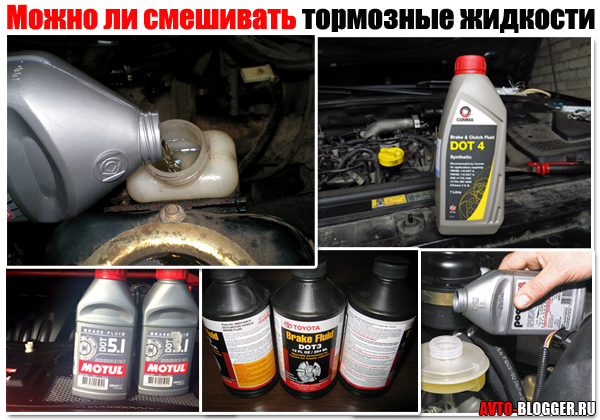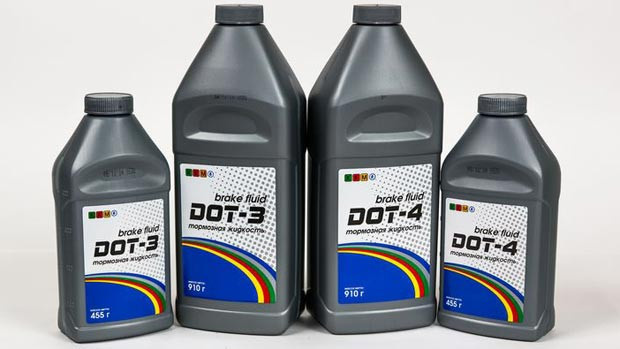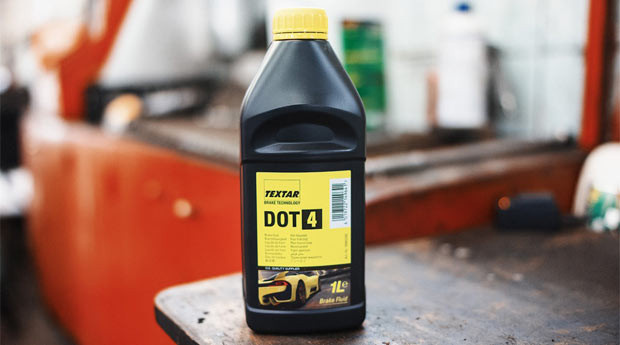
Can you mix brake fluid?
Among relatively inexpensive brake fluids, two representatives are most common today: DOT-3 and DOT-4. And most of the cars moving on the roads of the Russian Federation require the use of these compounds in the brake system. Next, we will find out whether it is possible to mix DOT-3 and DOT-4 brake fluid.

What is the difference between DOT-3 and DOT-4 brake fluids?
Both considered brake fluids are made on the same basis - glycols. Glycols are alcohols with two hydroxyl groups. This determines its high ability to mix with water without the formation of precipitation.
Consider the main operational differences.
- Boiling temperature. Perhaps, from the point of view of safety, this is the most significant indicator. You can often find such a misconception on the network: brake fluid cannot boil, since there are no such hot heat sources in the system in principle. And the disks and drums are at a sufficiently large distance from the tongs and cylinders to transfer the temperature to the liquid volume. At the same time, they are also ventilated due to the passage of air currents. In fact, heating is caused not only by external sources. During active braking, the brake fluid is compressed with enormous pressure. This factor also affects heating (an analogy can be drawn with the heating of volumetric hydraulics during intensive work). Liquid DOT-3 has a boiling point of +205°C.

- Lower boiling point when wet. The DOT-3 liquid will boil with the accumulation of 3,5% moisture by volume at a temperature of +140°C. DOT-4 is more stable in this regard. And with the same proportion of humidity, it will not boil without passing the mark of + 155 ° C
- Viscosity at -40°C. This indicator for all liquids is set by the current standard at a level not higher than 1800 cSt. Kinematic viscosity affects low temperature properties. The thicker the liquid, the more difficult it is for the system to work at low temperatures. DOT-3 has a low temperature viscosity of 1500 cSt. DOT-4 liquid is thicker and has a viscosity of about 40 cSt at –1800°C.
It was noted that due to hydrophobic additives, DOT-4 liquid absorbs water from the environment more slowly, that is, it acts a little longer.

Can DOT-3 and DOT-4 be mixed?
Here we consider the compatibility of the chemical composition of liquids. Without going into details, we can say this: both liquids in question are 98% glycols. The remaining 2% comes from additives. And of these 2% of the common components, at least half. That is, the difference in the actual chemical composition does not exceed 1%. The composition of the additives is formulated in such a way that the components do not enter into dangerous chemical reactions, which may result in a decrease in the performance of the fluid.
Based on the foregoing, we can draw an unambiguous conclusion: a system designed for DOT-3 can safely be filled with DOT-4.

However, DOT-3 fluid is more aggressive to rubber and plastic parts. Therefore, it is undesirable to fill it in non-adapted systems. In the long term, this can shorten the life of the brake system components. In this case, there will be no drastic consequences. A mixture of DOT-3 and DOT-4 will not fall below the lowest performance between these two liquids.
Also pay attention to fluid compatibility with ABS. DOT-3, which is not designed to work with ABS, has been tested to work with anti-lock braking systems. But this will increase the likelihood of failure and leakage through the valve block seals.

